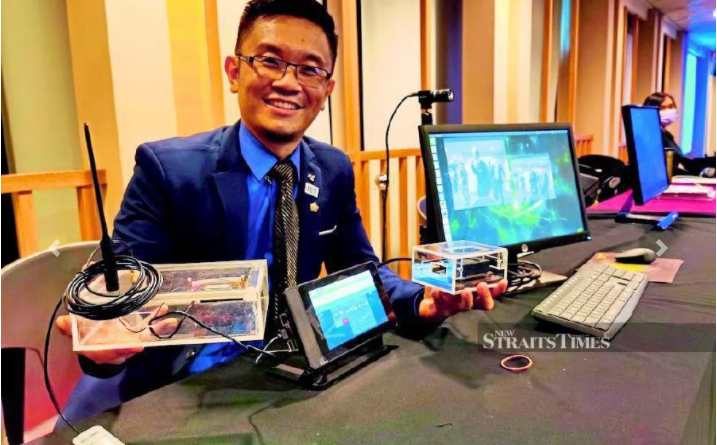#TECH: Keeping tabs on driver behaviour
A team of researchers has come up with a monitoring system to reduce accidents involving heavy vehicles
MALAYSIA has the highest road fatality risk among Asean countries and this has resulted in an estimated loss of RM8.8 billion to the country in 2017, according to the National Transport Policy 2019-2030 blueprint. Most of these fatal accidents involved heavy vehicles.
A total of 521,466 road accidents in 2016 caused the deaths of 7,152 civilians, or around 20 deaths per day.
These numbers mean Malaysia has the third highest fatality rate from road traffic accidents worldwide, surpassing the two most populous countries, China and India.
In light of this, a team of researchers at the Heriot-Watt University Malaysia’s School of Engineering and Physical Sciences, in collaboration with Malaysian Technical Standards Forum Bhd (MTSFB), has developed a high-tech monitoring system which can be fitted into heavy vehicles.
The in-vehicle Advanced Vehicle Monitoring and Assistance System is designed to reduce road accident issues by monitoring drivers’ behaviour on the road.
According to project team leader Jaysern Pang Jia Yew, road accidents contribute tremendously to the loss of property and, even graver, human lives.
“One of the major causes of road accidents is behavioural driving pattern, which includes reckless driving as well as sleep deprivation on the road,” said Pang, hence the creation of AVMS.
A key feature of this solution is its alarm function, which will trigger in response to driver behaviour at the wheel.
“This feature will improve the degree of alertness of drivers who may be tired. The AVMS is a potential solution in road safety initiatives,” said MTSFB’s general manager, Zaleha Abu Bakar.
The device is currently being pitched to industries to move it into the commercialisation stage.
It is hoped that with the implementation of the system nationwide, public safety on the road will be enhanced, especially when used on public transportation and heavy vehicles.
This will also translate into lower insurance premiums, reduce expenses related to road accidents and enable smart city transportation.
THE SYSTEM
Pang explained that the overall system utilises AVMS technology and Internet of Things (IoT).
“The AVMS technology is located inside the vehicle and performs real-time processing to monitor the driver’s behaviour on the road,” he said.
AVMS comprises three sub-systems, which are speed monitoring system, lane detection and deviation warning, and eye-gaze tracking and drowsiness warning system.
“All these ensure that driver fatigue can be detected as early as possible and prevent drivers from being at the wheel for more than the recommended number of hours,” said Pang.
To support the IoT application, the Edge Cloud model was integrated with AVMS.
“This links the operating safety system in the vehicle to the fleet management centre, ensuring both sides are well informed of the status of the transportation ecosystem, he said.
The data collected can also be used to study the driver’s physiological behaviour thoroughly.
The study may lead to a precise calculation of the insurance premium based on a driver’s behaviour — lower premium for a well-behaved driver, and vice-versa.
“Due to Malaysia’s sunny weather, our team has proposed a novel single-image shadow region detection technology known as SAFE.
“It has achieved top eight ranking for lane estimation evaluation and behaviour evaluation,” said Pang.
CHALLENGES
One of the challenges in developing the AVMS is getting the right reference material.
“There are many approaches to get the same thing done. Some of these approaches are in conflict with each other. There is a degree of trial and error, requiring much effort and strong determination in getting the desired results,” said Pang.
“Additionally, much active testing in a Malaysian driving environment was required,” he added.
IMPLEMENTATION
Commenting on the AVMS system implementation, Pang said his team has yet to do the necessary testing on lorry drivers in Malaysia.
“Currently, our test vehicles are on loan from our team members. We look forward to testing heavy vehicles such as lorries and buses,” he said.
Pang added that the AVMS system was suitable for all types of heavy vehicles.
“Drivers do not need special training courses. A simple briefing on how to sign in as the authorised driver should be sufficient. Other detection and monitoring features are automatically handled by the system,” said Pang.
The system costs around RM7,000 per unit, but this, said Pang, can be reduced.
“We hope it will contribute to a significant reduction in the percentage of heavy vehicle accidents,” he said.
Source: NST

